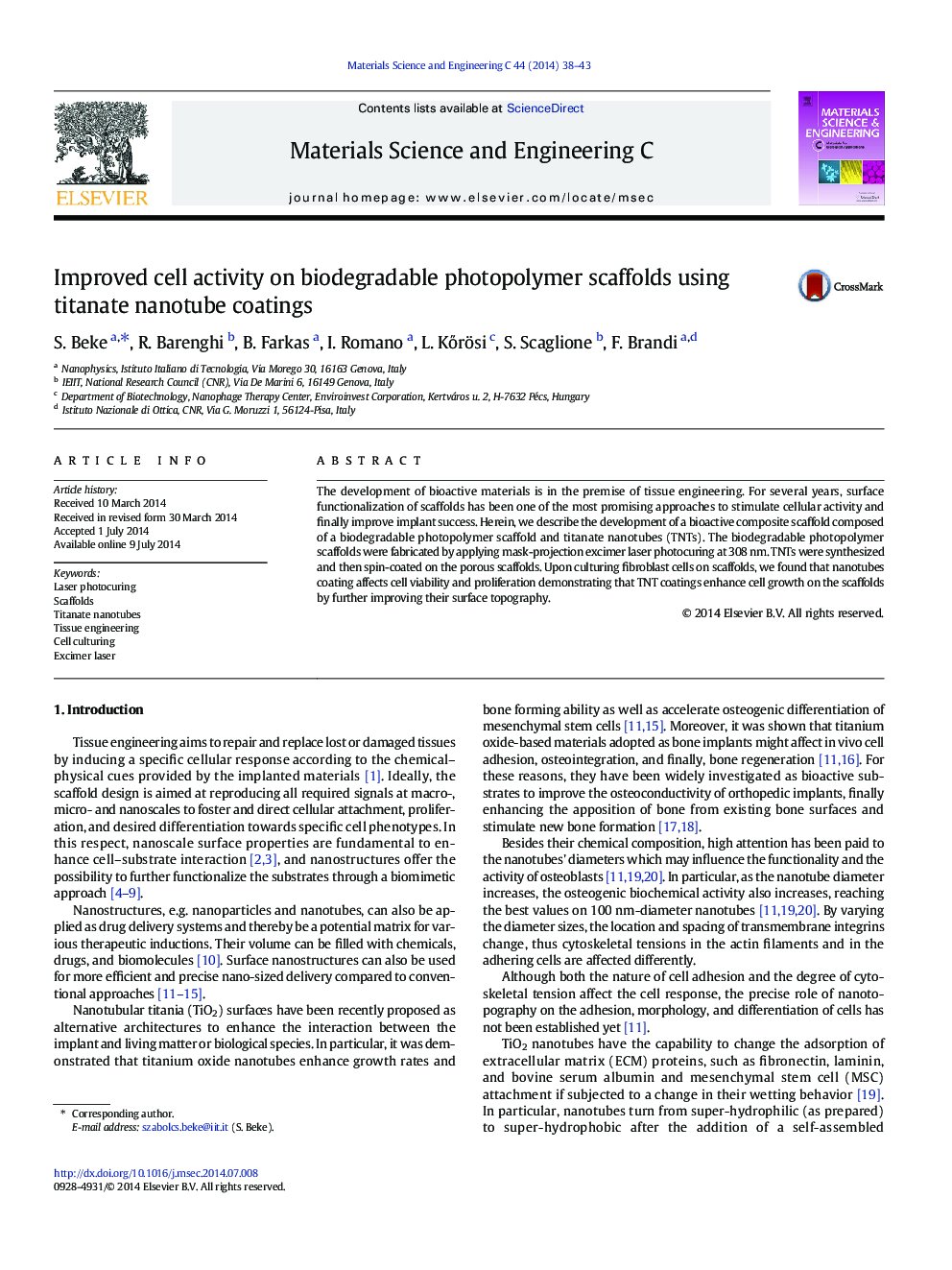| Article ID | Journal | Published Year | Pages | File Type |
|---|---|---|---|---|
| 1428256 | Materials Science and Engineering: C | 2014 | 6 Pages |
•Biodegradable scaffolds were produced by mask-assisted UV laser photocuring.•Titanate nanotube deposition was carried out without binding compounds or additives.•Titanate nanotube coatings enhanced cell viability and proliferation.
The development of bioactive materials is in the premise of tissue engineering. For several years, surface functionalization of scaffolds has been one of the most promising approaches to stimulate cellular activity and finally improve implant success. Herein, we describe the development of a bioactive composite scaffold composed of a biodegradable photopolymer scaffold and titanate nanotubes (TNTs). The biodegradable photopolymer scaffolds were fabricated by applying mask-projection excimer laser photocuring at 308 nm. TNTs were synthesized and then spin-coated on the porous scaffolds. Upon culturing fibroblast cells on scaffolds, we found that nanotubes coating affects cell viability and proliferation demonstrating that TNT coatings enhance cell growth on the scaffolds by further improving their surface topography.
